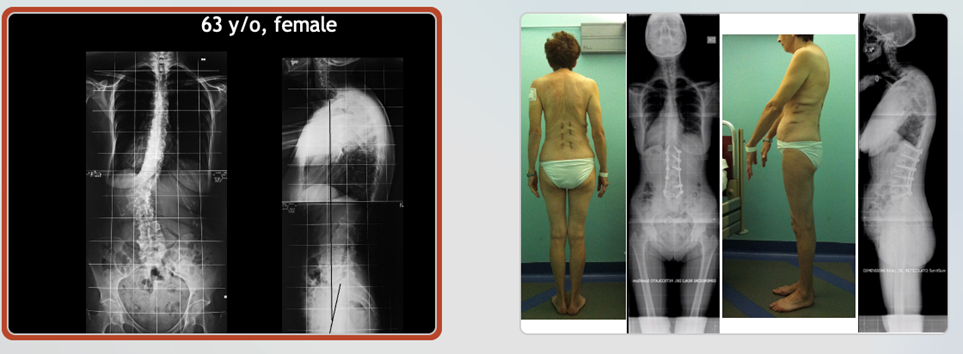
MISS - Minimally Invasive Spine Surgery
During the last two decades, minimally invasive techniques and instruments in spine surgery have undergone serious development in all fields. Specific advantages of these minimally invasive methods have put them forward in spine surgery in recent times.
Preservation of important anatomical structures of the spine is a major factor for the evolution of these procedures.
The patient in the picture complained for back pain and neurogenic claudication.
The standard radiographs showed an idiopathic lumbar scoliosis with a good sagittal alignment.
Surgery was suggested because of the worsening of the symptoms and the failure to respond to conservative treatment.
The technique of correction consists in the placement of multilevel lumbar interbody fusion through trans - psoas anterior approach (XLIF) followed by a posterior percutaneous fixation, in order to obtain a minimally invasive correction of the deformity.
The lower prevalence of complications and faster rehabilitation of patients are some of the advantages of minimally invasive spine surgery (MISS) After the surgery, a proper balance of the spine was obtained, and the functional recovery was extremely rapid.
Years after the operation, the patient was pain free and the follow-up radiographs demonstrate a good deformity correction and a balanced spine.